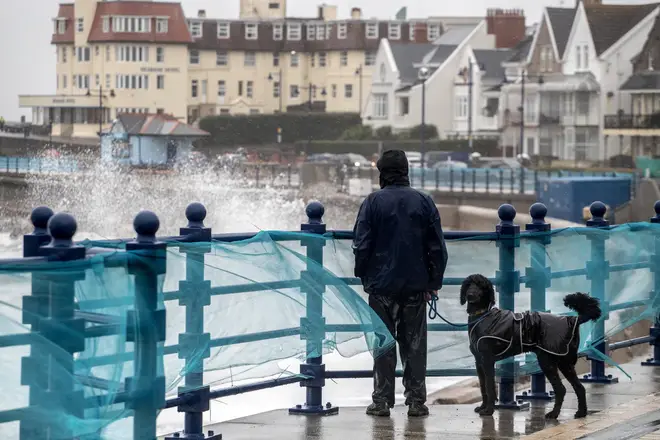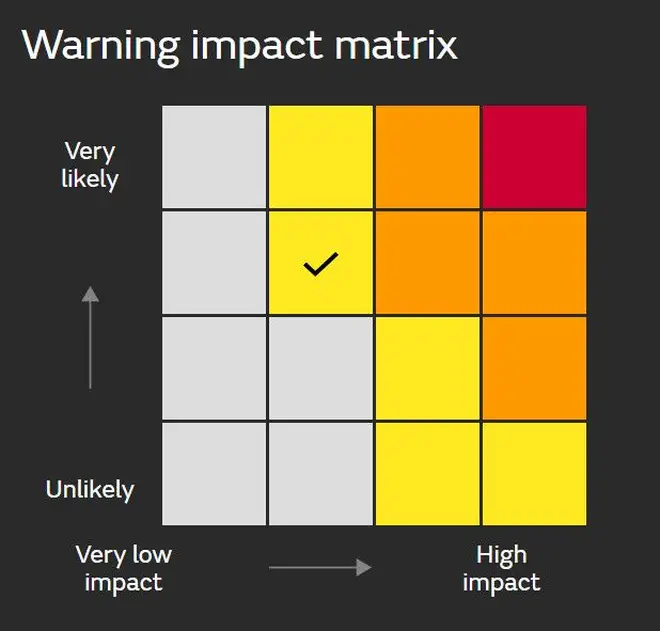What does a yellow weather warning mean and when does the Met Office issue them?
28 April 2019, 10:54

The UK national service issues yellow, red and amber warnings to prepare the public for rain, hail, storms, wind, snow and ice – but what do the colours mean?
The Met Office provides colour-coded weather warnings to keep the public informed of climate conditions.
According to the UK national service, it issues the cautionary notices to let residents and emergency responders know when “severe or hazardous weather” has the “potential to cause danger to life or widespread disruption”.
Not only do the yellow, amber and red alerts allow people to prepare for rain, snow, hailstones, thunderstorms, ice, fog and wind, but they give the ambulance, police and fire service time to put plans in place.
So what is a yellow weather warning? And how can you prepare yourself for the weather ahead?

What does a yellow weather warning mean?
A yellow weather warning means "be aware".
It's the least serious of the three colour-coded notices, which depend on a "combination of both the impact the weather may have and the likelihood of those impacts occurring," according to the Met Office.
Amber weather warnings advise you to "be prepared" as there is an increased likelihood of "severely or extremely bad weather" that could cause "travel delays, road and rail closures, power cuts and the potential risk to life and property".
Red weather warnings request that you "take action" as dangerous weather is expected. The Met Office says: "Keep yourself and others safe from the impact of the severe weather. It is very likely that there will be a risk to life, with substantial disruption to travel, energy supplies and possibly widespread damage to property and infrastructure. You should avoid travelling, where possible, and follow the advice of the emergency services and local authorities."
When does the Met Office issue them?
Most yellow warnings are issued when weather is expected to cause low level disruption of services such as trains and roads. Some people will be "directly impacted" but most will be able to get on with their day without encountering any issues.
At times, yellow warnings will impact the majority of Brits, but the "certainty of those impacts occurring is much lower".
It's always best to read yellow weather warnings in full to find out exactly how you might be affected.






















